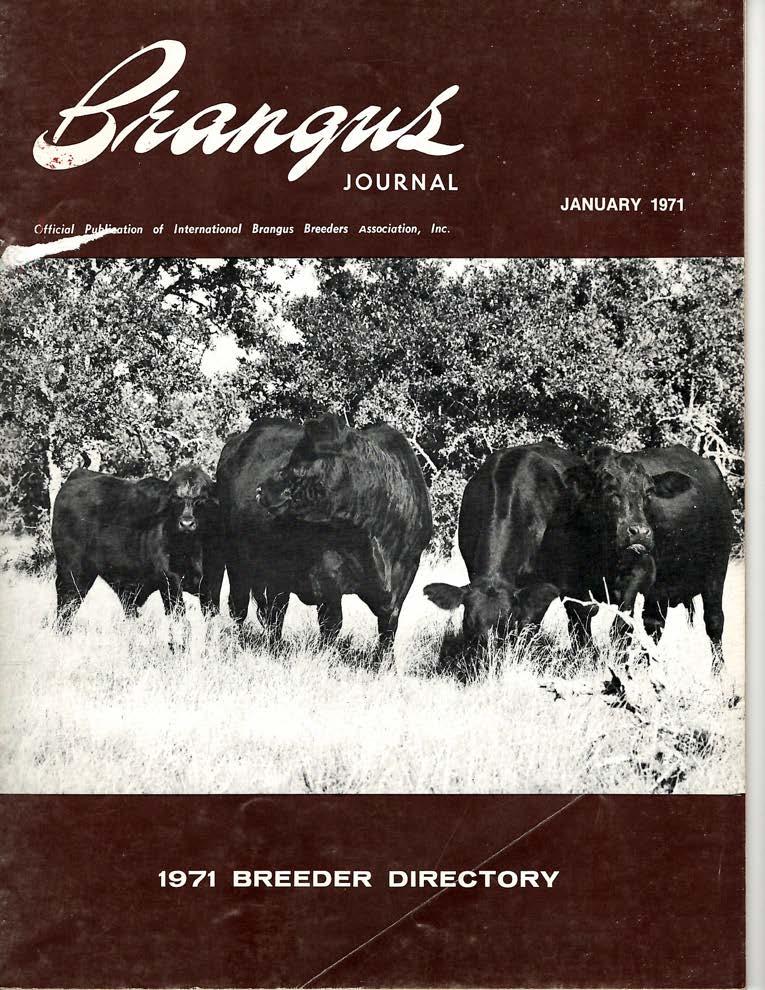CATTLEFAX TRENDS
FEMALE MARKET IN THE NEXT CYCLE
The IBBA is proud to bring you the CattleFax Trends Publication. Look for this article each month in the Brangus Journal and Frontline Beef Producer. If you would like to learn more about CattleFax, please go to www.cattlefax.com. In last month’s article the long-term outlook for the calf market was discussed. To summarize, a lot of factors are pointing to 2020 being the cycle lows, on an annual basis. From here, prices should trend higher into the middle of the decade as the cowherd endures a modest liquidation for another two or three years. Consequently, smaller calf crops should support prices and improve cow-calf producers’ leverage position to ultimately increase profitability. As margins grow, operations will be incentivized to expand, which in turn will strengthen demand for females. These trends were very prominent at the last cycle highs, and there is no reason to expect anything different at the next peak. Two major variables that influence the female market is profitability and producers’ calf market outlook. The historical relationship between female and calf prices supports that statement. From 1980 to October 2020, monthly bred female and calf values are nearly 99% correlated. Available grazing resources can also be added to the list of factors that impact cow prices; however, it is very difficult to predict rainfall amounts six months away, let alone five years from now. Assuming Mother Nature has provided ample resources, U.S. average bred cow prices could increase at least $200 to $300
per head over the next three to four years. The CattleFax U.S. average bred cow price is on track to average about $1,560 per head in 2020, while the U.S. 550-pound steer price should average roughly $160/cwt or $880 per head. This equates to a 1.77 ratio for the number of 550-pound steers needed to pay for a running age bred cow. The next highest ratio is 1.76 in 2017. Even though this year’s ratio could end as a new record, it would not be out of line relative to the last five years. Since calves averaged over $240/ cwt in 2014, the female-to-calf ratio has remained elevated in a range of 1.64 to 1.76, compared to the 20-year average of 1.56. CattleFax’s most recent 2021 outlook projects calves to im-prove $8/cwt and bred female prices to increase about $40, to $1,600 per head, on average, which equates to a 1.73 ratio. Since the mid-1970s, the ratio trends lower, in general, during the contraction phase of the cattle cycle. Although, the average level of the ratio has increased each of the last three contraction phases. The beef cowherd is expected to decline in numbers through 2022. Even if the female-to-calf ratio decreases, to some degree, it doesn’t mean the cow market will get any cheaper than current levels. It will mostly be a function of calf prices increasing at a faster rate relative to females. For example, if calves were to average $173/cwt in 2022, a conservative expectation, and the ratio goes back to 2015 levels of 1.64, then females would be worth $1,560 per head – steady with 2020. By 2023 or 2024, the cowherd is projected to be back in an expansion phase of the cattle cycle. When this transition occurs, the bred cow-to-calf ratio typically increases as demand for females strengthens. In the last (continued on page 44)
42
January 2021








